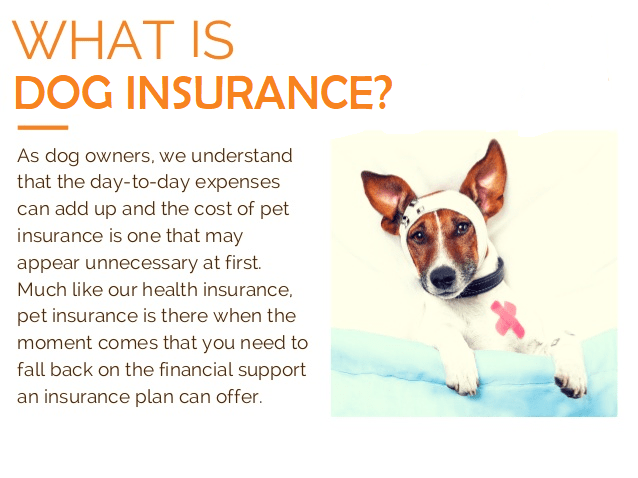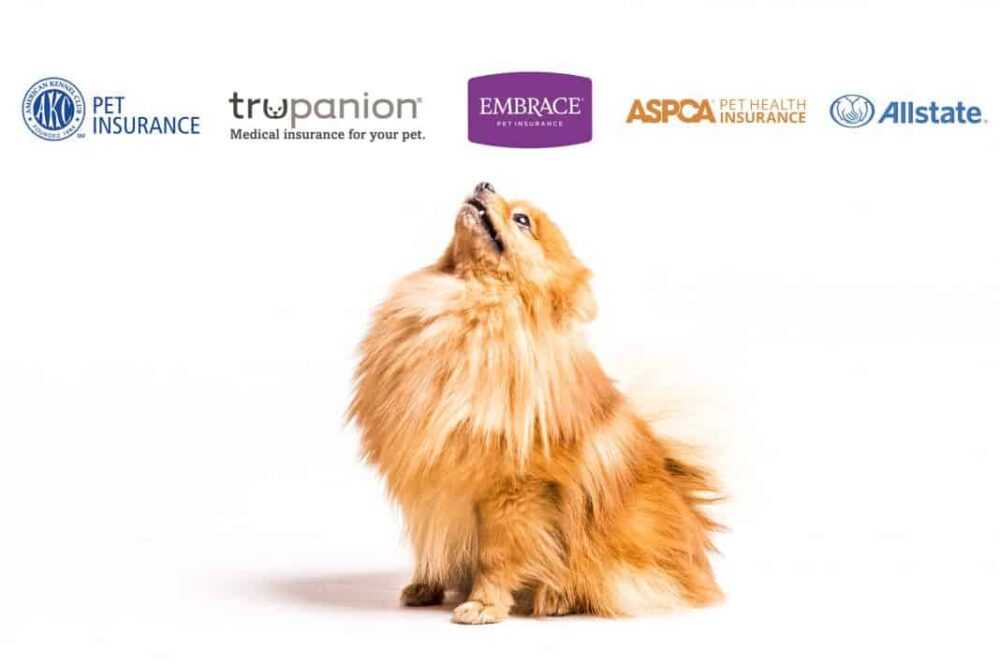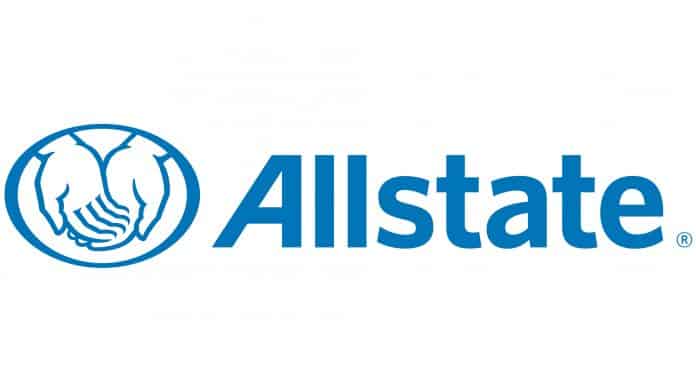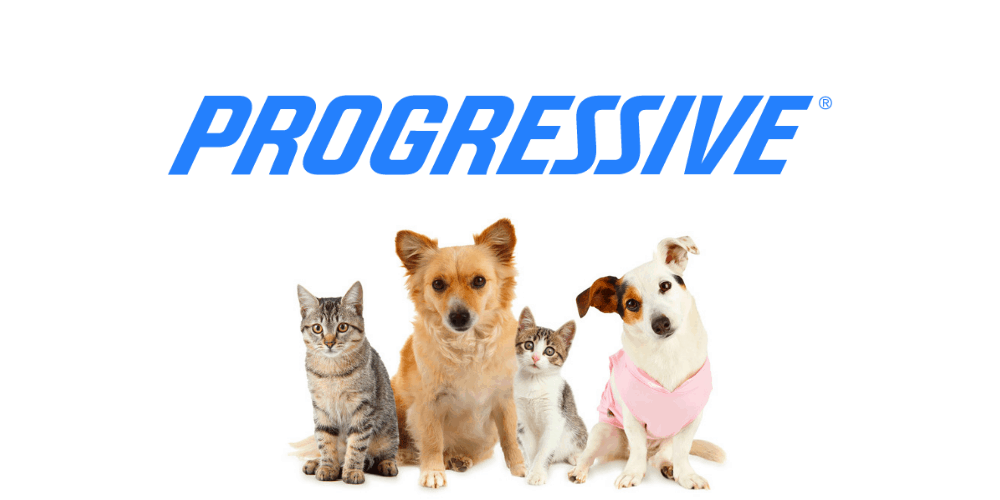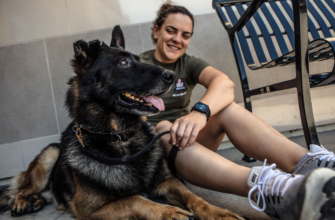Just like human beings, dogs too are prone to natural accidents such as illnesses and injuries. The cases of such incidents are not low either. Even though vets can come to the rescue anytime, there are chances of a sudden need arising for your dog to get surgery done.
The associated costs can be quite significant, often making you spend a lot of money (thousands of dollars) in just one go. This is not feasible for many of us. This is where dog insurance comes to the rescue.
By providing a minimal amount of money every month as the dog insurance cost, you can manage to avoid heavy unplanned expenses. You should keep in mind that dog health insurances do not cover all illnesses. Read this guide further to get an idea about dog insurance in general and what it includes and excludes.
Top Dog Insurance Companies
| 1. Healthy Paws Pet Insurance and Foundation 2. PetPlan 3. Embrace Pet Insurance 4. Trupanion 5. Nationwide 6. ASPCA Pet Health Insurance 7. Pets Best Pet Health Insurance 8. Petfirst Pet Insurance 9. AKC Pet Insurance 10. Figo Pet Insurance |
Dog Insurance Explained
The majority of dog insurance plans are paid on a monthly basis. You are reimbursed by the dog insurance company after you pay the premium. Unlike health insurance for humans, the health insurance for dogs requires you to pay some amount out of your pocket first. You pay initially to the vet, and then you file a claim with the insurer after which, you get reimbursed.
Dog owners not always have enough savings in hand to be able to commit to a huge medical expense and have to forcibly euthanize the dog. If your dog is affected by cancer, the subsequent therapy for it can cost you around $5,000 to $10,000. Getting operated for the removal of a tumor can cost around $3000 to $6000.
And how much does dog insurance cost? The previously mentioned expenditures can be brought down if you have insured your dog with amounts of approximately $30 to $40 per month. The price of dog insurance also depends on the insurer company.
What is Covered Under Dog Insurance Plans?

Even though the coverage varies with the insurance provider, the plans at large provide different degrees of coverage. The list of likely coverage is mentioned below:
- Drugs and medication
- Chemotherapy or any other cancer-related treatment
- Treating diseases, illnesses and accidents
- Lab tests, which include MRI scans and X-rays.
- Hospitalization and surgery
- Vaccinations
- Emergency vet visits
- Alternative therapies such as homeopathy
- Recurring illnesses
What is Not Covered Under Dog Insurance Plans?

A few things are common among dog insurers to not include as a part of the coverage. They are:
- Endodontic and orthodontic treatment such as crowns or root canals
- Pre-existing conditions
- Treatments intended for experimental purposes.
- Fees of the vet concerning breeding, whelping, or pregnancy
- A few preventive or cosmetic alterations such as declawing, ear cropping, or tail docking.
You should also ensure the following things about coverage:
- Your insurance plan may only be covering some services such as specialist care.
- Keep yourself updated on the renewal periods to avoid discontinuation of services.
- Specific genetic conditions are not covered by a few plans and pre-existing conditions are never a part of the coverage.
How Does Dog Insurance Work?
For those who want to buy insurance, the companies provide a waiting period between the purchase of the policy and the initiation of coverage. This prevents buying when the dog is sick. To verify the presence or absence of a pre-existing condition, the company requires a checkup to be done.
To initiate reimbursement, it is mandatory to pay out of pocket as a first step. Only after this can you file a reimbursement claim. After receiving your claim, the company will assess the claim, and once approved, deposit the money or send you a check. The entire flow can take from 3 to 15 business days to complete. The main portions of the reimbursement procedure are as follows:
- Deductible – the amount to be paid before you can get reimbursed. It can range from $0 to $1000.
- Reimbursement level – the proportion of the total bill that the insurer will pay to you.
It is between 50% to 100%.
- Annual Max – the maximum amount the insurer will pay each year. Charges beyond these are to be paid out of pocket. You may also possess a plan that has a “per incident maximum”(The maximum amount that a company can pay you for a single disease/injury).
To clarify it with an example, suppose you are eligible for a 100% reimbursement, an annual max of $10,000 and a deductible of $50. If the total bill comes to $15,000 then the company would pay $10,000 and you will pay $4,950 along with the $50 deductible.
Can I Get a Discount on the Dog Insurance Cost?
A lot of insurance plans have discounts available, such as for those people who:
- Are employed in a particular organization or company
- Have worked full-time in the military
- Pay full amount for each year as a part of the insurance policy
- Have microchipped dogs.
- Get a service dog enrolled
- Are enrolling multiple dogs
- Are special breeders
How is My Dog Insurance Premium Impacted?
At large, the rule is that your monthly costs will be high if your aim is to pay less for a single incident. The reimbursement level and the deductible are low when the cost per incident is low. However, at the same time, the premium will be high each month.
Moreover, some insurance companies have a plan of covering you each year, which is called the annual max. A higher max would mean a higher premium each month. If you opt for a plan in which the company covers most of the bills, then your premiums will naturally be higher.
Some companies give you the option of add-ons. Here, as a complement for the primary coverage, you get additional features for which you would have to pay. The add-ons consist of things like prescription food, regular check-ups, and dog examination fees.
The insurance companies also look at the following things in order to determine the insurance premiums:
- Location: Premiums depend on the zip codes and states. The more is the density of population; the more is the insurance cost.
- Age: It will not take much amount to insure young pups as they will have fewer issues in their initial years.
- Breed: The bigger sized dogs are generally prone to more health issues and also have a shorter lifespan. Hence, insurances are charged higher in this case.
- Species: Male dogs cost higher than female dogs for insurance.
A policy that has no annual max and has $50 deductible along with a 100% reimbursement level would result in payment of only $50 per occurrence. Still, the same plan would incur an expenditure of over $100 per month, which could be more than required. Thus, it would be best to select a policy that quite effectively balances your monthly budget affordability and out of pocket expenses per event.
Determining the Reliability of the Insurance Company
It is very crucial to do a thorough background check on the insurance companies before selecting any one of them. Consider a scenario where your dog is affected by a condition that is under coverage by the company.
Supposing that after five years the company goes out of business, then your subsequent insurance company would consider the ailment as a pre-existing condition, which would not be covered. Spend your premiums wisely to avoid unnecessarily putting down a dog.
Ask for the one underwriting the insurance plan to determine credibility. It would be best to check the company’s ratings; an A, A+, or an A++ rating is perfect. Also, confirm the status of the licensing of the company in your state or province. Check the length of the time a company was operating to determine its stability. Also, determine the number of customers enrolled.
Finally, assess whether the company has any complaints directed towards itself with the Better Business Bureau. There is a big bunch of websites that provides an insight into the customer reviews on dog insurance companies. Some websites also provide users the ability to compare dog insurance plans. These insights will give you an idea of the trustworthiness of the company and the ease of the procedure of reimbursement.
What is Dog Bite Liability Coverage?
Dog bite liability coverage is a very important part of the homeowner’s insurance. It gives you the money required to pay for lawsuits or medical bills arising from the bites of your dog. In other words, it is the dog insurance for bites.
The more aggressive your dog, the costlier the price of the liability coverage. If you do not get liability coverage, the expense of the lawsuits against you can push you towards bankruptcy. You could even be compelled to leave your own home. The more you become aware of your duties, the safer is the life for you and your fellow citizens.
Top 20 Dog Insurance Companies
1. Healthy Paws Pet Insurance and Foundation(with an A+ rating):
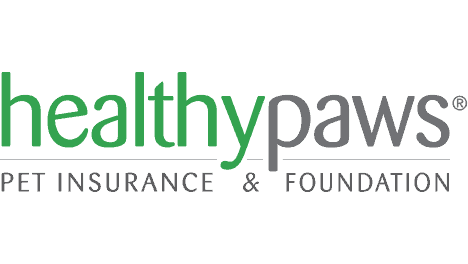
This company includes coverage for alternative treatments, hospitalization, surgery, blood tests, x-rays, cancer care, etc.
The company has an option of benefits of an unlimited lifetime. This is applicable after you have paid your deductible.
The claims are usually reimbursed in the span of 3 to 10 business days. Some things are not included such as the pre-existing conditions, and neutering/spaying.
The choice of reimbursement is between 50% to 90%.
2. Petplan(with an A+ rating):
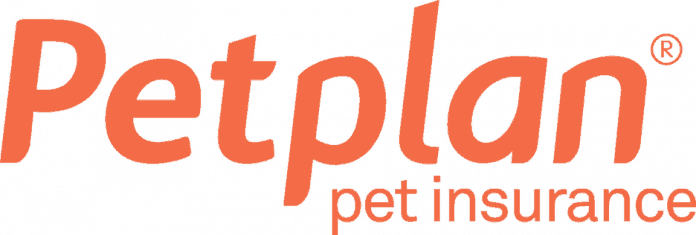
This company provides insurance plans for dogs of all ages. The coverage even encompasses travel expenses for a pet emergency during a tour and boarding fees for a hospital.
All the states of the USA are a part of PetPlans’ plans. Along with dog dental insurance, the regular plans cover things such as cancer, diagnostic treatment, prescriptions, surgery, and examinations.
Reimbursement is done according to the price chosen at enrollment.
3. Embrace Pet insurance(with an A+ rating):
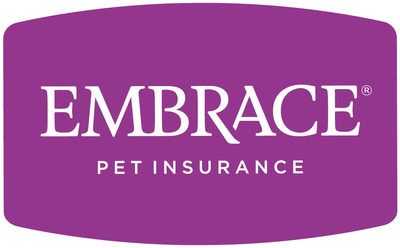
The company has affordable plans and works in every state of the USA. Coverage includes dental diseases up to $1000 per year.
It also includes hospitalization and surgery, diagnostic testing, specialist care, alternative treatments, exam fees, cancer treatments, genetic as well as other breed-specific conditions.
If you remain without a claim for an entire year, Embrace will give you a $50 reduction in yearly deductible. The choice of reimbursement is between 70% to 90%.
4. Trupanion(with an A+ rating):

Trupanion has lifetime deductibles that allow you to pay deductibles for each individual treatment of the dog.
The plan that encompasses entire medical coverage has no yearly restrictions at the time of payouts.
It is a great option for dogs of large breeds because it doesn’t have surplus restrictions for ligament injuries and hip dysplasia.
5. Nationwide(with an A+ rating):

It is one of the largest dog insurance companies. For Nationwide, all veterinarians are available.
It has a plan called the “whole pet with wellness”. It offers the coverage of regular wellness expenses such as dental cleaning, vaccinations, and examinations.
Reimbursement level is 90%, which essentially means that you pay just 10% out of pocket for individual cases. The premium is slightly above average.
6. ASPCA Pet Health Insurance(not accredited with the BBB):
The cost-efficient plan of ASPCA is the Complete Coverage plan that covers behavioral issues, hereditary conditions, illnesses, and accidents.
The waiting period for diseases and the coverage of an accident is of 14 days. By paying the extra cost, you can get preventive care coverage.
The yearly coverage ranges from $5000 to a limitless amount. Options for deductibles include $100, $250, $500. The choice of reimbursement is between 70%, 80%, and 90%.
7. Pets Best Pet Health Insurance(with an A+ rating):

The coverage includes prescription drugs that are not a part of many other dog insurance plans.
The best plans of the company are Plus and Elite. They include a wide coverage of facilities.
The company’s yearly restrictions are quite without much space. Only the best Elite plan offers limitless yearly benefits. Others, however, offer only up to $5000 benefits.
Deductibles are ranged from $50, $100, $200, $250, $500, or $1,000. The choice of reimbursement is among 70%, 80%, and 90%.
8. Petfirst Pet Insurance(with an A+ rating):

The uniqueness of this pet insurance company lies in not having a waiting period for conditions such as orthopedic and hip dysplasia.
The yearly benefits provided are no unlimited. The range of benefits is between $2000 to $10,000.
The deductibles are low comparatively. They are $50, $100, $250, or $500. The choice of reimbursement is between 70%, 80%, and 90%.
9. AKC Pet Insurance(with an A- rating):

The AKC Pet Insurance plan covers many things including extractions of permanent teeth, chemotherapy and radiation treatment, prescribed medications, hospitalization, and surgery.
It also includes coverage for x-rays and ultrasounds, laboratory tests, allergies, injuries, and accidents.
10. Figo Pet Insurance(with an A+ rating):

The basic plan covers hip dysplasia, prescriptions, behavioral conditions, illnesses, and accidents. The unique upper-tier plan covers tracking down a lost pet.
The benefits begin at $5000 and end at $10,000, or unlimited. Yearly deductibles are $100 to $1500. Reimbursement choices are among 70%, 80%, 90%, and 100%.
11. Pet Assure(with an A+ rating):
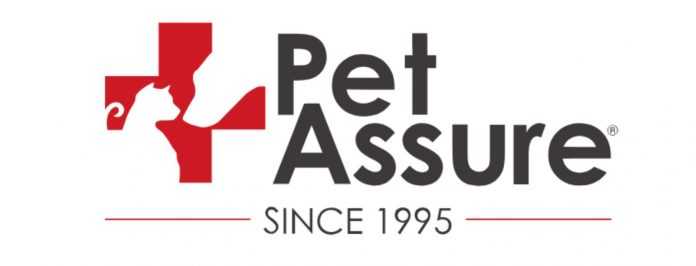
Pet Assure Insurance includes coverage for a wide range of medical procedures such as tumor removal, emergency care, sick visits, allergies, surgeries, hospitalization, cancer care, spays & neuters, and dental exams.
It also includes pre-existing conditions and procedures without any deductible. The usage of the plan is not restricted; it can be used an unlimited number of times.
The plan has a zero waiting period too.
12. Hartville Pet Insurance(with an A+ rating):

The primary plan offered is known as “Complete Coverage” and it has coverage for ligament injuries, knee injuries, dental conditions, accidents and illnesses.
For ligament injuries, there is a 14-day waiting period. The yearly deductibles are priced at $100, $250, and $500.
The reimbursement level is selectable from among either 70%, 80%, or 90%. The yearly coverage can be from $5000 to an unlimited cost.
13. Allstate(with an A+ rating):
With no limits on benefits, with a 2-day waiting period for accidents. Allstate does not mention a deductible range nor the reimbursement level.
14. 24PetWatch Pet Protection Services(not rated by BBB):

24PetWatch provides more plans than other services, which may be crucial in deciding which service to choose.
The company offers a discount even on microchipping your dog. Microchipping provides peace of mind and saves money. This helps dog masters track down their lost pets.
The company doesn’t offer unlimited benefits, unlike many others.
15. Pet Partners(not accredited with the BBB):

The Pet Partners offers coverage for wellness, accidents and illnesses, ultrasounds, alternative treatments, x-rays, hospitalization, surgery, and medications.
It offers reimbursement levels of 70%, 80%, and 90%.
The optional coverage includes spay/neuter, dental cleaning, inherited conditions, and exam fees.
16. Prudent Pet Pet Insurance(with an A rating):
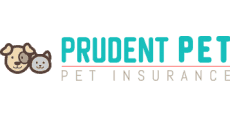
The monthly charges incurred by the company include $16 for illness and accident and $10 for only accidents. The rates differ depending on breed, age, and species.
The choices for reimbursement are 70%, 80%, and 90%. The options for deductible are $100, $250, $500.
The dog needs to be at least 8 weeks of age to get enrolled in the plans for this company.
17. PetPremium Pet Health Insurance(with an A+ rating):

The monthly rates for the insurance start at $12 to $80. Two coverage plans provided are Total Coverage and Accident Coverage.
Both of these plans have options for the yearly limits. They are of $2,500, $3,000, $4000, $5,000, $7,000, $10,000, $15,000, $20,000 and unlimited.
The reimbursement levels given by the insurance company are 70%, 80%, and 90%. Moreover, the yearly deductible is applied from either $100, $250, or $500.
18. SPOT Pet Insurance(with an A rating):

The cost of the plans starts at $10 per month, which is for accidents only, and $16 for complete coverage. The complete plans cover cancer and other chronic conditions, illnesses, injuries, and accidents.
The reimbursement level is the common one that has the option of either $70, $80, and $90.
The deductible is of an amount of either $100, $250, or $500.
19. Eusoh Pet Insurance Alternative:
For a few owners, this could be preferable over regular insurance because it can cover their pets having fewer necessities and limitations.
The waiting period for eusoh is an entire month though and that could be a negative sign for many.
20. Progressive Pet Insurance(with an A+ rating):
The Progressive Pet Insurance has three plans, namely: accident and illness plan, accident-only plan, and wellness routine plan.
The things not covered under any plans include prescription food, boarding and grooming, and elective and cosmetic procedures.
The reimbursement levels are $70, $80, $90. The deductible is from $50 to $1000 and the yearly limit is $5000 or unlimited.
Conclusion
In terms of affordability, buying dog insurance is not always better than not buying it. In the future, your dog may not even suffer serious illnesses, in which case your only out of pocket expenditure would be the yearly checkups.
Most people nevertheless think that not taking insurance is riskier. It is advisable to give a thought to the past illnesses of your dog and the likelihood of getting sick when deciding.
If there is not enough in-hand cash with you at the time of unplanned surgery, then you could very likely be faced with the dilemma of whether to save your dog or save your money.
